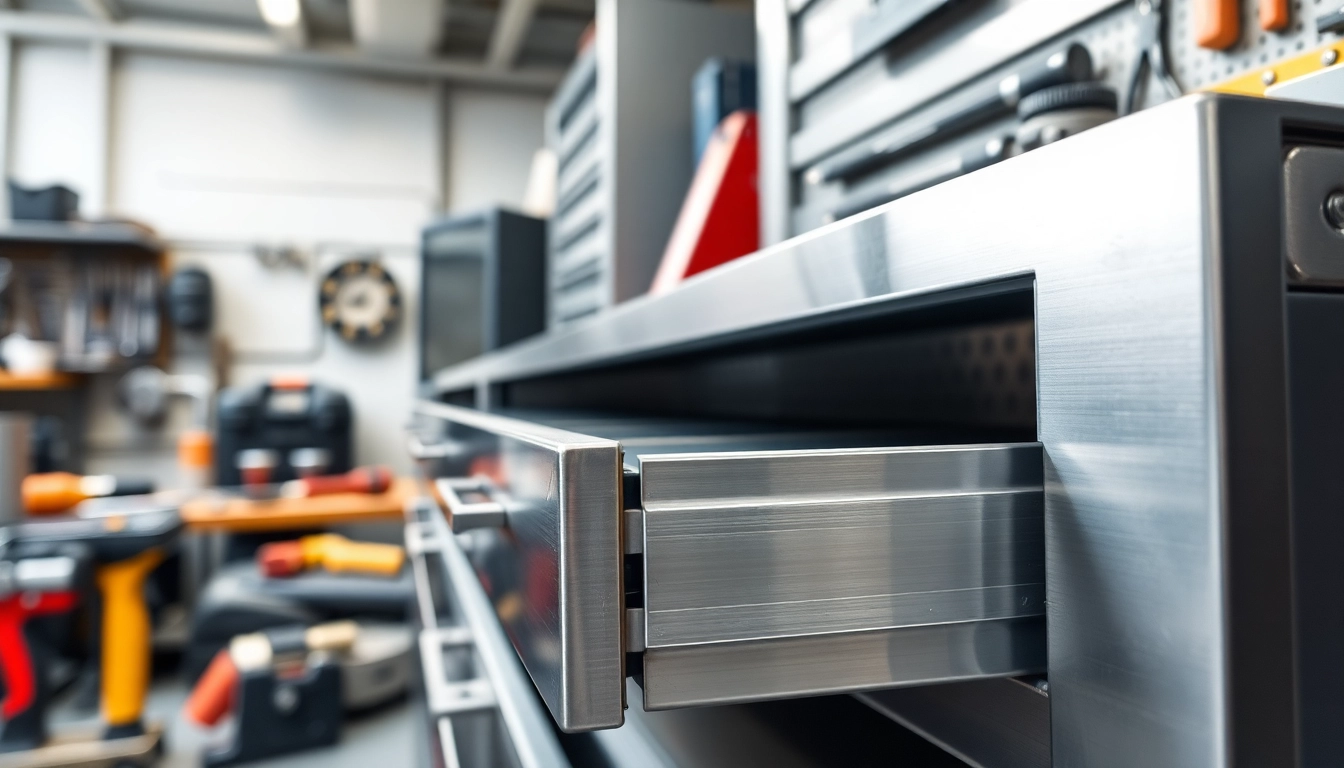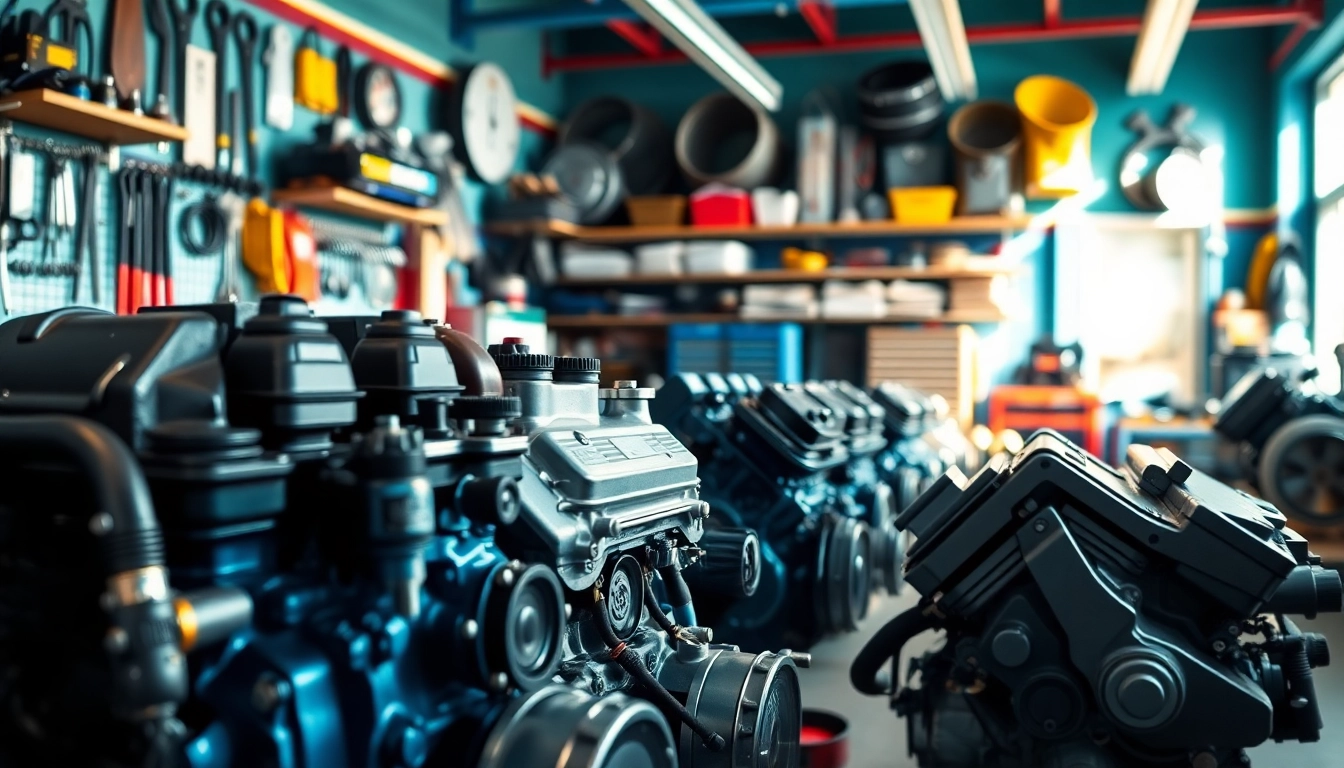Understanding Metal Drawer Systems
Introduction to Metal Drawer Systems
Metal drawer systems have become an essential feature in contemporary cabinetry and furniture design. They provide not only an aesthetic appeal but also ensure functionality, strength, and durability. With increasing demand for efficient storage solutions, these systems integrate advanced engineering with modern design practices to suit various applications—from residential kitchens to commercial settings. As you explore the options available, you’ll discover that choosing the right Metal Drawer System can greatly enhance both the usability and longevity of your furniture.
Key Components of a Metal Drawer System
A metal drawer system is comprised of several key components that collectively contribute to its performance and usability. Understanding these components is crucial for making an informed choice. The primary elements include:
- Drawer Frame: The structural component that provides support for the entire system, typically made of high-strength metal.
- Drawer Slides: These are mechanisms that facilitate smooth opening and closing. They can come in various styles, such as ball-bearing or undermount slides.
- Drawer Bottom: This forms the base of the drawer, often reinforced to carry heavy loads without sagging.
- Front Panel: The portion visible to users; it can be customized in terms of finish and design to match surrounding cabinetry.
Comparing Metal Drawer Systems with Other Types
When evaluating storage solutions, it’s essential to compare metal drawer systems with alternatives such as wooden or plastic drawers. While each material has its advantages, metal drawers stand out due to their exceptional durability, resistance to wear, and need for minimal maintenance. Unlike wood, metal does not warp or swell, making it ideal for high-moisture environments. On the other hand, wooden drawers can offer a warmer aesthetic, appealing in more traditional homes or for those desiring a rustic look.
Benefits of Using Metal Drawer Systems
Durability and Strength of Metal Drawers
One of the most notable advantages of metal drawer systems is their incredible durability. Made from heavy-duty steel or aluminum, these drawers typically boast higher weight capacities compared to wooden or plastic counterparts. This durability allows them to handle significant weight without compromising structural integrity, making them ideal for both heavy-duty commercial applications and everyday home use.
Cost-Effectiveness and Long-Term Value
Investing in a quality metal drawer system can offer significant cost savings over time. Although the initial price may be higher than other materials, the longevity and reduced need for replacements or repairs often outweigh the upfront costs. Metal drawers also retain their functionality longer, as they are less likely to suffer from issues like warping or damage from water exposure.
Versatility in Design and Application
Metal drawer systems are incredibly versatile, available in various designs and configurations to meet different needs. They are suitable for a range of applications, from kitchen cupboards to office filing cabinets. Their clean lines and modern aesthetics make them a favorite choice in contemporary design, while customizable finishes and styles offer the flexibility to blend seamlessly into any environment.
Choosing the Right Metal Drawer System
Key Considerations When Selecting a Metal Drawer System
Choosing the appropriate metal drawer system involves several factors. Consider the following to ensure your choice meets your specific requirements:
- Intended Use: Different applications may require different features, such as soft-close mechanisms for kitchens or heavy-duty slides for tool chests.
- Size and Dimensions: Measure the available space and select drawer systems that fit and efficiently utilize that space.
- Style and Finish: Choose a finish that complements your overall design aesthetic, considering factors like color and texture.
Understanding Weight Ratings and Load Capacities
Understanding load capacities is crucial for selecting metal drawer systems. Each system has a specified weight rating, usually provided by the manufacturer. This rating indicates how much weight the drawer can safely hold. Be sure to consider the intended use; for example, kitchen drawers might hold varying weights of utensils, while workshop drawers might need to accommodate heavier tools.
Types of Metal Drawer Systems Available
There are various types of metal drawer systems, each designed for specific applications:
- Side-Mounted Slides: Common in residential applications, these slides are easy to install and provide good support.
- Undermount Slides: These are hidden beneath the drawer, allowing for a clean look and smoother operation.
- Ball-Bearing Slides: Utilizing a ball-bearing mechanism, these slides provide smooth movement, ideal for frequently used drawers.
Installation and Maintenance Best Practices
Step-by-Step Installation Guide for Metal Drawers
Installing a metal drawer system can be completed with some basic tools and following a methodical approach. Here’s a step-by-step guide:
- Gather necessary tools: screwdriver, drill, level, and measuring tape.
- Measure and mark the desired height of the drawer slides inside the cabinet.
- Attach the slides to the cabinet, ensuring they are level.
- Assemble the drawer by attaching the slides to the drawer sides.
- Insert the completed drawer into the slides, ensuring they are secured and functioning correctly.
Maintenance Tips to Ensure Longevity
To ensure your metal drawer systems last for years, regular maintenance is key:
- Keep the slides clean and free of debris to maintain a smooth operation.
- Periodically check for any loose screws or connections and tighten them as needed.
- Avoid overloading the drawers beyond their weight rating to prevent potential damage.
Common Issues and Solutions
While metal drawer systems are robust, occasional issues can occur:
- Drawer Won’t Open Smoothly: This could be due to debris. Cleaning the slides usually resolves this issue.
- Drawer Misalignment: If the drawer is crooked, check the level of the slides and adjust as necessary.
- Weight Issues: If drawers are sagging or falling apart, ensure they are not overloaded and consider redistributing contents.
Trends in Metal Drawer Systems
Latest Innovations in Metal Drawer Technology
As the industry evolves, so do metal drawer systems. Innovations include advancements in soft-close mechanisms that prevent drawers from slamming and improve user experience. Furthermore, improvements in materials have led to lightweight yet durable designs, enhancing usability without compromising structural integrity.
Eco-Friendly Options in Metal Drawer Systems
With sustainability in mind, many manufacturers are now offering eco-friendly metal drawer systems made from recycled materials and developed through environmentally conscious practices. These options not only reduce environmental impact but also cater to the growing number of consumers interested in sustainable living.
Future of Metal Drawer Systems in Furniture Design
The future of metal drawer systems looks promising as consumer demand for efficient and innovative storage solutions grows. Integration of smart technology, where drawers can be controlled for automatic opening and closing, is on the horizon. Additionally, customizable designs that seamlessly integrate with evolving home and office spaces will continue to shape the market.



